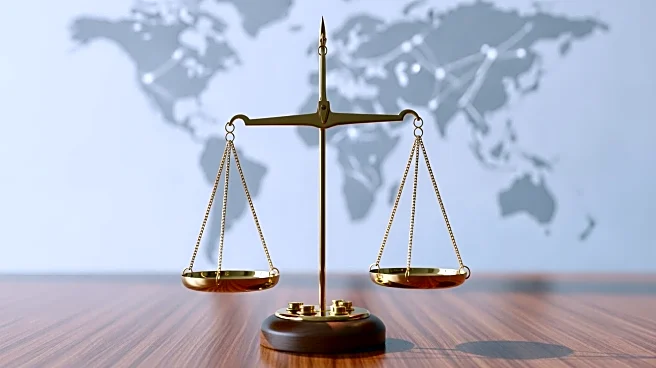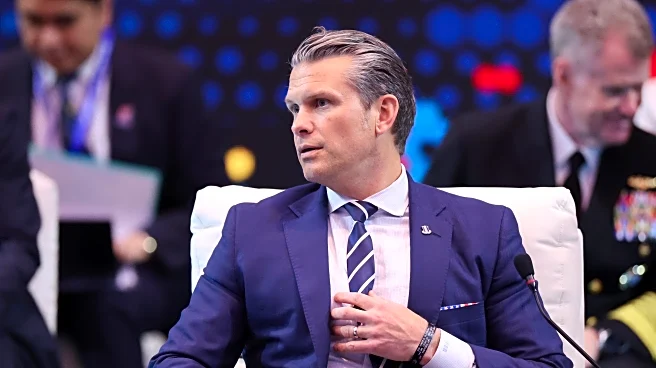What's Happening?
Indian exporters have called on Prime Minister Narendra Modi to provide relief from the effects of the United States' decision to impose a 50 percent tariff on Indian goods. This move has significantly
impacted labor-intensive sectors such as textiles, footwear, and handicrafts. During a meeting with Modi, exporters requested measures like a temporary pause on loan repayments and subsidized interest rates to mitigate the economic strain. The tariffs, which are the highest in Asia, have made Indian goods less competitive compared to those from countries like Vietnam and Bangladesh. The US is India's largest export market, and the new tariffs have led to a nearly 12 percent drop in exports to the US in September compared to the previous year.
Why It's Important?
The imposition of high tariffs by the US on Indian goods has significant implications for India's economy, particularly affecting sectors that rely heavily on exports to the US. The tariffs could potentially reduce India's annual growth by 0.6 to 0.8 percentage points, according to economists. This situation underscores the vulnerability of Indian industries to international trade policies and highlights the need for strategic economic planning to cushion against such external shocks. The tariffs also reflect broader geopolitical tensions, as they were partly justified by India's purchase of Russian oil and its reluctance to open its markets further to American goods.
What's Next?
The Indian government is under pressure to negotiate a trade deal with the US to alleviate the tariff burden. However, mixed signals from Indian officials suggest that a resolution may not be imminent. Meanwhile, Indian exporters are seeking additional support from the government, including a potential devaluation of the rupee to offset losses. The ongoing situation may lead to further economic adjustments and policy responses as India navigates its trade relationship with the US.













